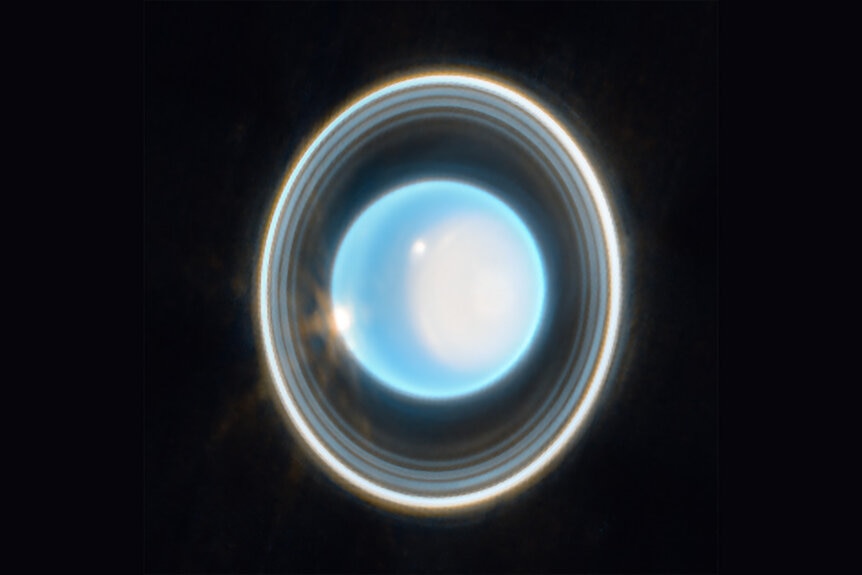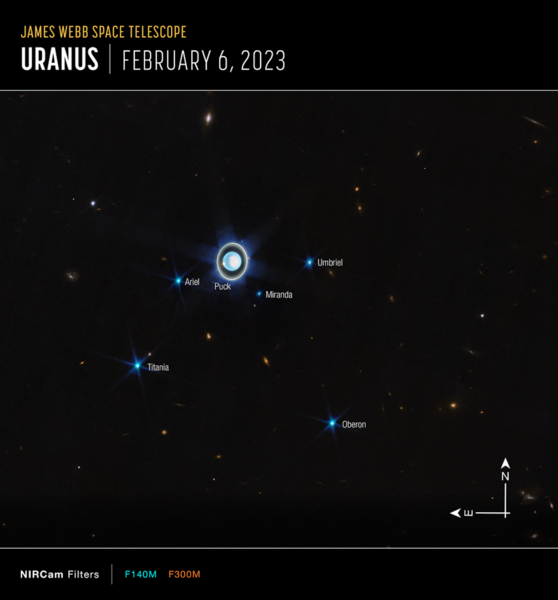Create a free profile to get unlimited access to exclusive videos, sweepstakes, and more!
JWST takes a closeup look at the invisible rings around Uranus
Beautius maximus!

Humanity has been trying to reach beyond its own limitations since the moment we first awoke beneath the Sun. We have sought magic and technology as potential solutions for everything we’re lacking. The right tool can help a person bring down a mammoth and the right potion or poultice might grant eternal life or render the user invisible. At least, that was the thinking.
By 1897, magic had given way in some circles to science, but the desire to be more than we are remained. In his classic science fiction story, The Invisible Man, H.G. Wells looked not to magic, but to chemistry as a means through which his character could achieve that goal. Now, more than a century later, chemistry has yet to yield the secret formula for making someone invisible. If science holds the answer for making a person or object invisible, we might have to look in another direction.
RELATED: Universal Classic Monsters, ranked: Frankenstein, Dracula, and more
That was the thinking behind the 2020 adaptation (streaming now on Peacock!) from director Leigh Whannel (Upgrade, Insidious: Chapter 3), starring Elizabeth Moss (The Handmaid’s Tale) and Oliver Jackson-Cohen (The Haunting of Hill House). In it, optical engineer Adrian Griffin (Jackson-Cohen) develops an optical suit which gathers information from the environment and displays it on the suit’s surface in real time. To an observer, the wearer becomes completely invisible. That’s a problem if the wearer is your abusive ex who is willing to fake his own death in order to continue tormenting you forever.
Any sufficiently advanced technology is indistinguishable from magic.” – Arthur C. Clarke”
Invisible things are a problem if they’re hiding in your attic, but they’re also a problem for astronomers trying to figure out the secrets of the universe. Fortunately, we’re a lot better at revealing invisible things than we are at making them. That’s especially true when the James Webb Space Telescope (JWST) gets involved.
NASA’s flagship telescope spends most of its time looking into the deep cosmos. Some of its first images were of galaxies formed less than a billion years after the Big Bang, and those visions of early galaxies are stretching our understanding of the universe. The JWST may have been custom made for peering into deep space and time, but it’s also incredible at showing us a side of our own solar system we’ve never seen before.
Earlier this year, astronomers pointed the JWST at the edge of our solar system to snap a candid pic of Uranus. The result is an image more beautiful and detailed than we’re used to. Uranus is typically depicted as a nearly featureless gas giant, awash in deep blue. It doesn’t have the swirling atmospheric features of Jupiter or the stunning rings of Saturn. If Saturn and Jupiter are the attention addicts who are always doing too much, Uranus is their homely sibling, standing just outside of the cosmic spotlight. The truth is that Uranus just needs a better PR team.
The images from the JWST confirm that Uranus is a lot better looking if you’re close enough, or have sensitive enough instruments, to fully appreciate it. We aren’t all that close (there are about two billion miles between the telescope and Uranus), but the JWST doesn’t have the atmosphere to contend with and its optical sensors are second to none.
RELATED: How invisibility would wreck your body and destroy your DNA
The new images reveal eleven of Uranus’s 13 known rings. The faintest of those rings have only been observed twice before now, first by Voyager 2 as it raced past the planet on its way out of the solar system in 1986, and later by the Keck Observatory using adaptive optics. The trouble with seeing Uranus’s rings is that they are nearly invisible from here. That’s because the rings are faint and the planet itself is comparatively close and bright. It’s like trying to see the subtle flicker of a candle flame while staring at a spotlight.
The JWST is able to tease them out using its Near-Infrared Camera (NIRCam) which prioritizes nonvisible IR light over visible light. The image combines data using two filters at 1.4 and 3.0 microns, which are represented by blue and orange, respectively. The image also reveals a brightening of the pole on the right side of the planet. If you’re wondering why the pole is all the way up there, you’re not alone.
Unlike Earth, Uranus rotates around its own axis at an angle roughly 90 degrees off from its orbital plane. In plain English, that means it’s spinning on its side. The result is a world with incredibly long seasons, each lasting roughly 21 years. That means the weather systems on Uranus are likely very different from what we’re used to. That’s something images like this might also help to explain by identifying cloud features in the upper atmosphere.
A wider view of the image places Uranus against the dark backdrop of space. The brilliant blue marble is surrounded by rings and accompanied by its six largest moon. In the background, a smattering of distant galaxies remind us that the JWST can show us objects billions of light years away as well as it can show us our own backyard.
Seeing invisible things might save your life, like in The Invisible Man (streaming now on Peacock!), or it might just light a fire in your soul. Both are good.




























